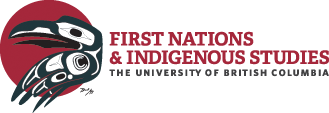About Nicholas Galanin
…‘contemporary’ approaches to art, he pursues them both in parallel paths. His stunning bodies of work simultaneously preserve his culture and explore new perceptual territory. Galanin studied at the London…
About Nikamowin (Song)
…northern Manitoba. Swampy Cree is our dialect. I was raised there, but am currently living in Winnipeg, after an eleven year hiatus in Vancouver, BC. When creating a new piece,…
Royal Proclamation, 1763
…Proclamation of 1763 to Constitutionally Entrenched Aboriginal Rights.” In Indigenous Peoples’ Rights in Australia, Canada, and New Zealand, Paul Havemann [Ed.]. Auckland: Oxford University Press, 1999. 351-377. Hutchings, Patricia Margaret,…
Calder Case
…der Peet: Aboriginal Rights and Canadian Law, 1973-96.” Indigenous Peoples’ Rights in Australia, Canada, & New Zealand. Havemann, Paul, Ed. Oxford: Oxford University Press, 1999. 428-445. Foster, Hamar, Heather Raven…
Bill C-31
…United Nations Human Rights Committee. Lovelace, a Maliseet woman from Tobique in New Brunswick, had married an American man and moved away from her reserve community. When the marriage ended…
Powley Case
…historic time frame qualifier needed a new definition that differed from the “pre-contact” conditions set for Indian rights in Van der Peet or Sparrow. As Métis peoples are a result…
Aboriginal Title
…resource development in the province declined due to uncertainty over Aboriginal title. A number of First Nations throughout British Columbia had set up roadblocks and other similar protests in desperate…
Ipperwash Crisis
…land, a group of approximately 30 members of the band, including a number of children, began their occupation of the park on September 4, 1995. They planned to peacefully occupy…
Terminology
…“Aboriginal peoples” (plural) indicates a number of separate Aboriginal populations. To capitalize or to not capitalize? There is no official consensus on when to capitalize certain terms. Some people consider…
Sparrow Case
…New regulations set up by the government introduced fishing licenses and restricted Aboriginal peoples to “food fishing,”– fishing strictly for their own personal consumption. Despite these restrictions, the Musqueam continued…

